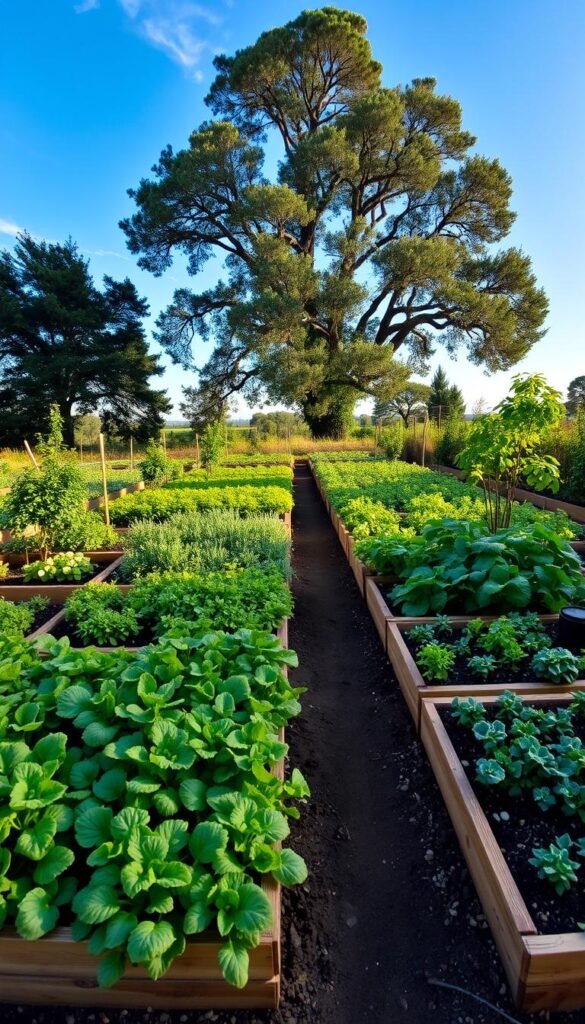Imagine transforming small spaces into lush, productive vegetable patches. This innovative approach replaces traditional row planting with compactly organized grids, letting you grow more food in less area. By dividing growing zones into equal sections, you create a natural system that reduces weeds and simplifies maintenance.
Raised beds form the foundation of this strategy, providing better soil control and drainage. A pre-planned design ensures each plant gets exactly what it needs to thrive, whether you’re dealing with scorching summers or chilly springs. This method works equally well in urban balconies and backyard plots.
You’ll discover how to adapt these principles to your local weather patterns while boosting yields. We’ll explore soil mixes that retain moisture in dry regions and crop selections perfect for humid zones. Get ready to rethink how you use every inch of your growing space!
By the end, you’ll know how to build a customized system that produces fresh veggies all season. Let’s dive into the details that make this space-efficient solution ideal for busy households and first-time growers alike.
Introduction: Embracing Square Foot Gardening
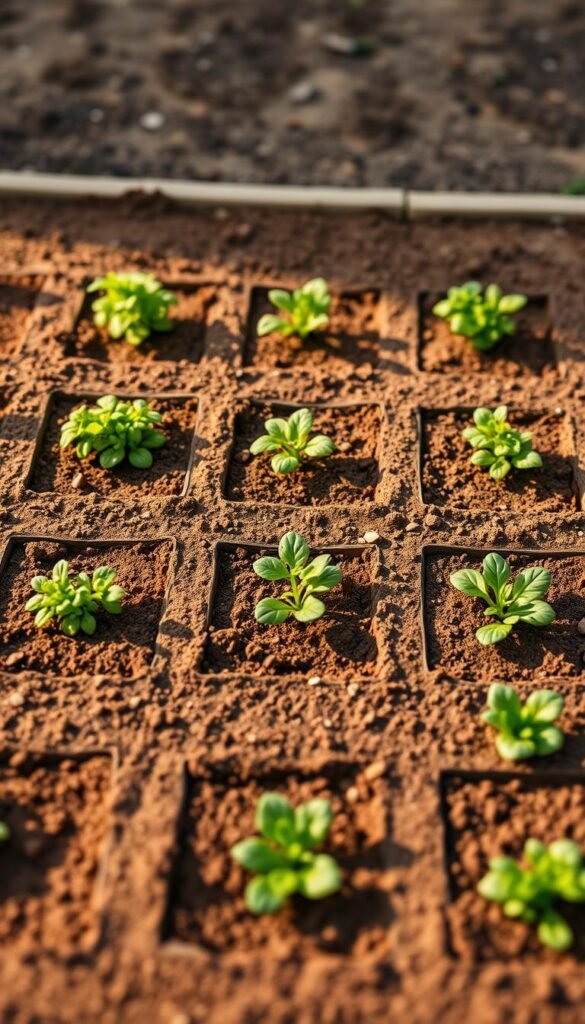
Tired of endless weeding and wasted space in your garden? This method reimagines how you grow food by dividing beds into manageable 1×1-foot grids. Instead of long rows, you’ll arrange herbs, veggies, and flowers in precise clusters. The result? More harvests with less effort.
Traditional row planting often leaves unused gaps and compacted soil. By switching to dense, organized grids, you maximize every inch. A 4×4-foot bed can hold 16 different crops—like lettuce, carrots, and basil—without overcrowding. Busy schedules thrive here: watering and pest control become faster tasks.
Raised beds are key to this strategy. They prevent soil compression while improving drainage—a game-changer for root veggies like radishes. You’ll spend less time bending over and more time enjoying fresh produce. Even better, smart garden plans let you rotate crops easily, keeping soil nutrients balanced.
Think this only works for big yards? A sunny balcony can host a 2×2-foot setup with cherry tomatoes and peppers. Whether you’re growing a salad mix or medicinal herbs, this approach adapts to your space and climate. Ready to turn your patch into a productivity powerhouse?
Understanding Square Foot Gardening Principles
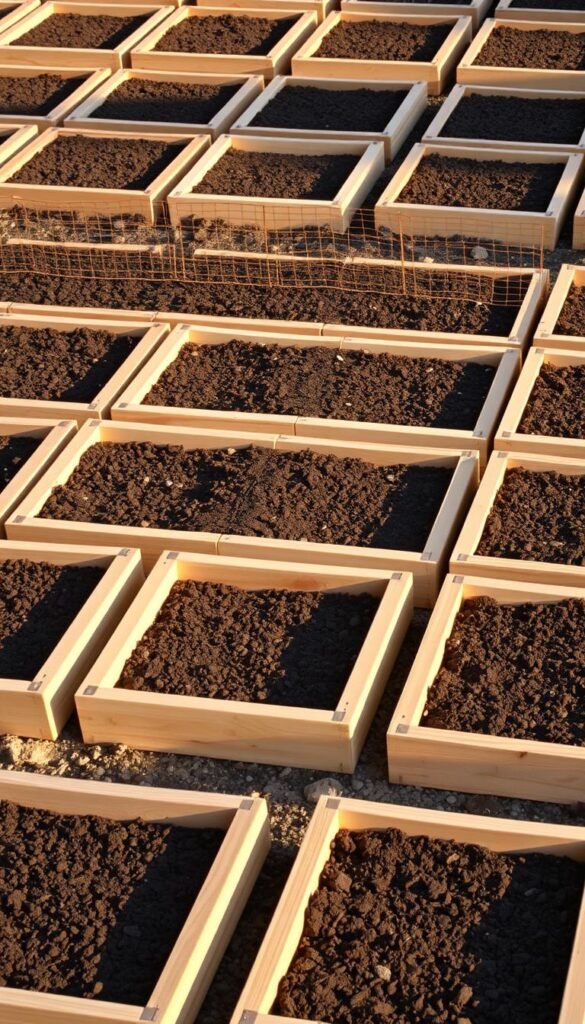
Ever wonder how some gardens burst with veggies in tiny spaces? The secret lies in strategic organization. By dividing your growing area into 1×1-foot sections, you create a roadmap for success. Each square becomes a mini ecosystem, tailored to your plants’ needs.
The Philosophy Behind Planting by Area
This method turns guesswork into precision. Seed packets tell you exactly how far apart to space plants—use those numbers! For example, radishes need just 3 inches between them. That means you can fit 16 in one square. Larger plants like broccoli? One per square.
Check out this quick guide for common crops:
| Plant | Seeds/Plants per Square | Spacing (inches) |
|---|---|---|
| Carrots | 16 | 3 |
| Spinach | 9 | 4 |
| Peppers | 1 | 12 |
Benefits of a Raised Bed Approach
Raised beds solve two big problems: soggy soil and tired roots. Loose, fluffy earth lets water drain fast while giving roots room to stretch. You’ll never step on your growing space, so the dirt stays airy. For extra success, follow square-foot gardening guides to build beds that last.
These setups also make weeding a breeze. Plants grow close enough to shade out invaders but never compete for nutrients. Want to plan a square-foot garden that thrives? Start with quality soil and let the grid do the rest!
Preparing Your Garden Space and Materials
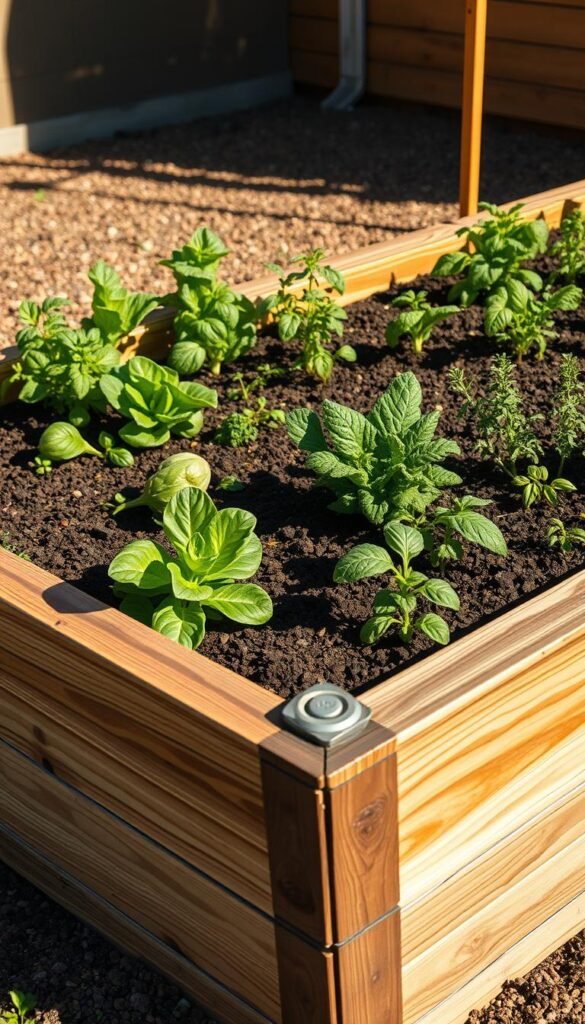
Ready to turn your vision into reality? The right setup starts with smart choices for your beds and soil. Proper preparation ensures your plants grow strong from day one, whether you’re working with a patio or a half-acre plot.
Choosing and Building Raised Garden Beds
Raised beds give you full control over soil quality and drainage. Build them using rot-resistant wood like cedar or opt for metal kits. A 4×4-foot size works well for most spaces—easy to reach across without stepping on the soil.
Keep depth between 6-12 inches for most veggies. Deeper beds (18-24 inches) suit root crops like potatoes. Line the bottom with hardware cloth to deter pests. Need inspiration? Check our guide to designing a square foot layout that maximizes yields.
Selecting the Ideal Soil Mix for Healthy Plants
Your plants crave a light, nutrient-packed foundation. Mel’s Mix—a blend of equal parts vermiculite, peat moss, and compost—is a gold standard. Vermiculite retains moisture, peat moss aerates, and compost feeds roots.
Test your mix by squeezing a handful: it should hold shape briefly before crumbling. Add 2 cups of organic fertilizer per cubic foot for hungry crops like tomatoes. Remember, proper plant spacing prevents overcrowding. Use a grid system to mark squares, ensuring each seed has room to stretch its roots.
Start with quality seeds suited to your climate. Quick-growing radishes pair well with slower peppers in shared squares. Refresh soil annually with compost to maintain fertility—your plants will thank you with bumper harvests!
Complete Square Foot Gardening Layouts for Every Climate
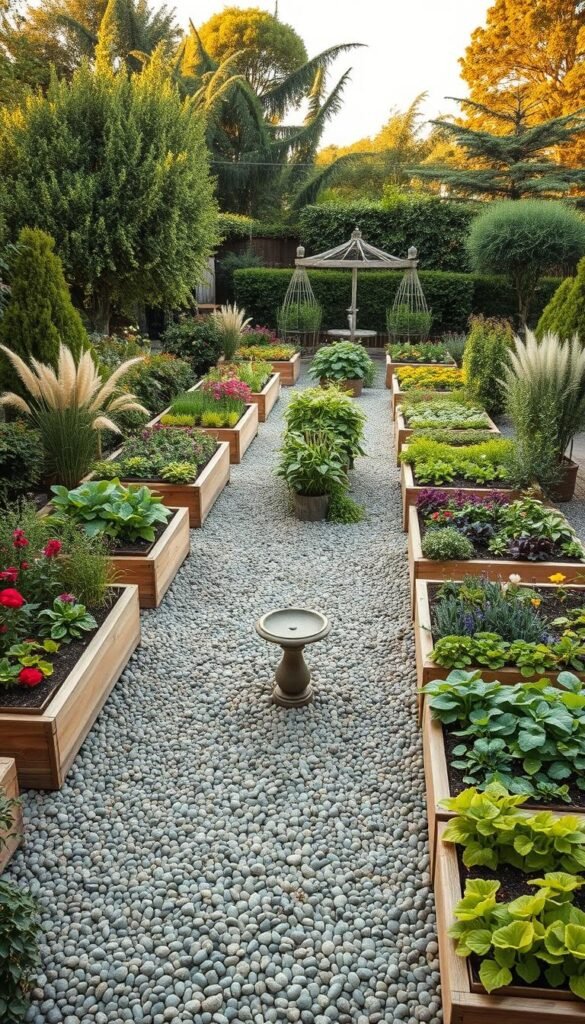
What if your garden could thrive whether you’re battling desert heat or coastal humidity? Smart spacing and crop choices turn weather challenges into growth opportunities. Let’s explore how to tweak your setup for year-round success.
Adapting Your Layout to Different Weather Conditions
Hot climates demand strategic shading. Try planting taller crops like pole beans on the west side to shield lettuce or spinach. Reduce seeds per square by 25% in arid zones—this gives roots more room to access limited moisture.
In cooler regions, maximize sunlight capture. Use dark-colored mulch to warm soil faster and cluster heat-loving plants like squash near the center. For frost protection, drape lightweight fabric over frames—easy to remove during sunny days.
Three weather-smart adjustments:
- Double compost layers in rainy areas to prevent nutrient washout
- Use trellised peas as natural windbreaks in gusty zones
- Swap out slow-growing crops for quick-turn radishes in short summers
Rotate crops seasonally using a seasonal care guide to maintain soil health. In humid climates, space tomatoes wider (1 per 2 squares) to improve airflow and prevent mildew. Always match plant density to your region’s average rainfall—tight clusters work where water’s plentiful, sparse where it’s scarce.
Remember: Your garden layout isn’t set in stone. Track what thrives and adjust each season. Beans might dominate your coastal boxes, while drought-tolerant herbs claim squares in southern plots. Flexibility is key to abundant harvests!
Mastering Plant Spacing and Layout Design
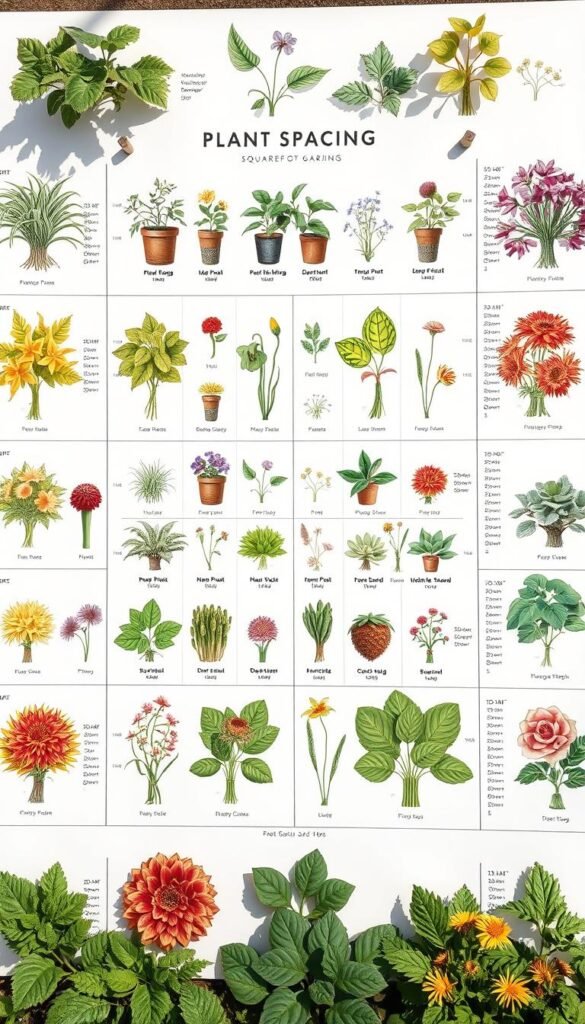
What’s the secret to growing more veggies in less space? It starts with smart arrangements that balance plant needs with available room. A well-planned garden bed acts like a puzzle—each piece fits perfectly without crowding its neighbors.
Using Spacing Charts Like a Pro
Seed packets hold golden information: the exact number of plants per square. For example, bush beans need 9 per grid, while larger varieties require just 4. This table simplifies common crops:
| Plant | Seeds per Square | Ideal Spacing | Common Mistake |
|---|---|---|---|
| Radishes | 16 | 3 inches | Planting too deep |
| Lettuce | 4 | 6 inches | Overlapping leaves |
| Zucchini | 1 | 24 inches | Ignoring vine spread |
Density Hacks for Healthier Crops
Mark your grid with string or wooden dividers to visualize spacing. If seedlings overlap, thin them early—crowded roots steal nutrients. For radishes, sow seeds in offset rows instead of straight lines to maximize space.
Tall plants like pole beans? Place them on the north side to avoid shading smaller greens. Always check packet instructions—some seeds need deeper planting than others. Remember: Airflow prevents disease, so leave breathing room between leafy varieties.
Planning and Customizing Your Garden Layout

Your garden’s success starts with a personalized roadmap that matches your space and goals. Whether sketching on graph paper or using apps, mapping your beds ensures every plant thrives where it’s planted. Let’s explore tools and tricks to turn ideas into reality.
Designing a Garden Planner That Works for You
Printable templates simplify layout design. Circle crops needing full sun or shade, then arrange them based on height and spread. Digital tools like Planter or Gardenize suggest ideal companions and track growth stages.
| Tool Type | Best For | Key Feature |
|---|---|---|
| Printable Grids | Quick sketches | Easy erasing |
| Mobile Apps | Seasonal tracking | Weather alerts |
| Spreadsheets | Yield calculations | Harvest timelines |
Incorporating Companion Planting and Trellises
Group plants that help each other grow. Basil repels pests near tomatoes, while marigolds protect squash vines. Swiss chard pairs well with onions—their shallow roots won’t compete for nutrients.
Vertical supports maximize space. Train cucumbers up A-frame trellises, freeing ground area for leafy greens. Pole beans climb strings, creating shade for heat-sensitive radishes below.
Three steps to launch your plan:
- Measure your bed and divide into squares
- Assign crops using spacing guidelines
- Mark trellis zones and companion pairs
Advanced Techniques for a Thriving Garden
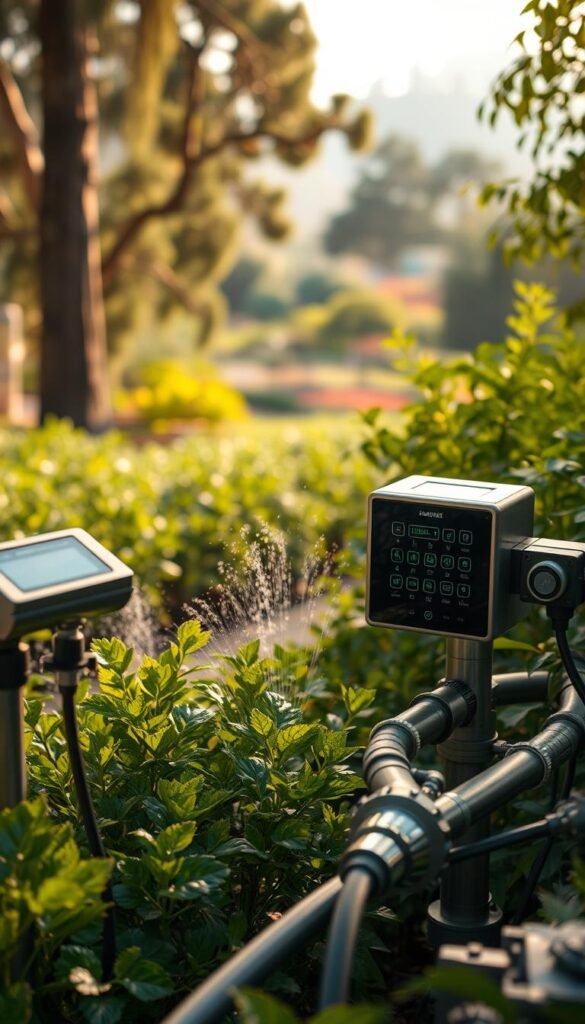
Ready to push your garden’s productivity to new heights? Modern solutions streamline watering, crop management, and planning—giving you more harvests with less guesswork. Let’s explore cutting-edge methods that keep your plants thriving through every season.
Innovative Watering Systems and the Garden Grid™
Say goodbye to uneven hydration. The Garden Grid™ combines precision irrigation with built-in spacing guides. This drip system delivers water directly to roots through pre-spaced emitters, matching your plant layout perfectly. Install it once, and enjoy 30% less water waste!
Efficient Crop Rotation and Seasonal Adjustments
Rotate plant families yearly to prevent soil depletion. Follow this simple cycle:
- Leafy greens → Fruiting plants → Root veggies → Legumes
In winter, swap summer squash for cold-hardy kale. Use quick-growing seeds like arugula to fill gaps between main crops.
Leveraging Technology for Garden Planning
Apps like Gardenate send planting reminders based on your zip code. Soil moisture sensors alert you when plants need hydration, saving time and resources. Pair these tools with your garden planner for foolproof yields.
Three tech upgrades to try this year:
- Smart sprinklers with weather-based scheduling
- Companion planting databases
- Harvest-tracking spreadsheets
Wrapping Up Your Garden Journey with Ease
Your journey to a thriving garden starts with smart choices. By focusing on precise plant spacing and nutrient-rich soil, you’ll see bigger harvests in less space. Remember: those 1×1-foot squares aren’t just lines—they’re blueprints for success.
Large plants like tomatoes need room to stretch, while quick-growing peas can share squares with leafy herbs. Stick to the recommended number of seeds per grid—overcrowding steals sunlight and nutrients. Swiss chard thrives when given 4 inches between stalks, proving that careful planning pays off.
Adjust your grid each year based on what works. Maybe swap peppers for carrots in wet seasons or add trellises for vertical plants. Healthy soil stays your secret weapon—refresh it with compost between crops.
Every gardener learns through trial and error. Celebrate those first ripe cherry tomatoes, then tweak your layout. With time, you’ll master balancing sun-loving plants with shade-tolerant ones. Now go turn that patio or backyard into your personal produce aisle!

